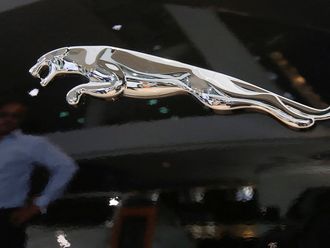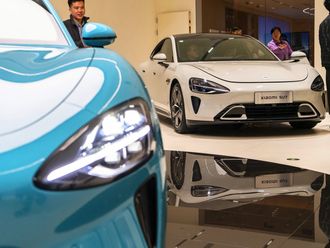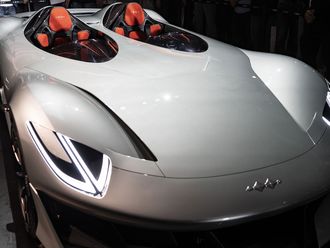The UAE is a dream market for any car lover.
With auto brands being well represented, the easy availability of finance and relatively low ownership and running costs, most people can buy cars here that they could only aspire for in their home countries.
The automotive industry is also closely entwined with the growth of the UAE as a nation — brands like Toyota Land Cruiser, Nissan Patrol and Range Rover are legendary for being sturdy and reliable choices when most of the landscape was just desert and road connectivity was poor.
Ever since the early 1900s, when the auto industry emerged as an organised sector, it has been going through periodic changes associated with one or more of the following factors — improvement in large-scale manufacturing capabilities, advances in engineering and design, government regulations on emissions, better marketing strategies, and, of course, the price of oil.
However, over the next decade or so, a combination of regulatory, technology and consumer driven trends is likely to disrupt the automotive industry, and this would call for a paradigm shift in terms of product and service delivery models.
The four key trends are:
Rise of shared mobility
In many developed markets, congested urban spaces, high cost of ownership and tolls in key downtown areas are driving consumers towards shared mobility and e-hailing. Services such as Zipcar, Lyft and Uber are becoming increasingly popular, as they offer convenient mobility without the hassle of parking, maintenance etc.
Even in Dubai, the RTA has introduced shared mobility by launching Sharekni, a car pooling app. Rise of shared mobility is likely to have a direct impact on car ownership — as per McKinsey estimates, while global car ownership rates will rise, the increase will only be a moderate 2 per cent per annum over 2015-30. And by 2030, revenues from shared mobility services will be worth $1.5 trillion (Dh5.5 trillion) globally.
Smaller, quieter, cleaner
Over the last two decades, reduction in car emissions has largely been driven by government regulations, for instance, the move from leaded to unleaded fuel and from naturally aspirated to forced induction engines has been a result of stricter emissions norms.
Along with further tightening of these norms, there is also a rise in environmental consciousness among consumers, which is leading to acceptance of hybrids and electric engines, forcing manufacturers to redesign their product portfolios. By 2030, partly/fully electrified cars are likely to form around 15 per cent of new vehicle sales, though the adoption would vary quite a lot by region.
Even in the UAE, the government is encouraging the use of electrified engines — e.g. the RTA has set a target of 4,750 hybrid cars to be inducted in Dubai taxi fleets by 2021, i.e., half of the total fleet is to be made up of hybrids.
Automated driving
The majority of automobiles today are equipped with a high degree of advanced driver assist systems (ADAS) and it is estimated that by 2030, up to 15 per cent of all new cars could be fully autonomous. This would call for a high level of collaboration between the automotive and IT industries.
And it would also have an impact on manufacturing set up, upgradation of servicing capabilities and even introduction of new service models, such as on-air upgrades (i.e. upgrade software in your car just as you would do on your smartphone).
Hyper-connected customer
Customers today need to be connected 24x7, even while they are in transit. So far, connectivity in automobiles is largely limited to navigation and voice/media streaming, but consumers are increasingly looking for full compatibility between their mobiles/ tablets and car consoles.
With more cars having autonomous features, it would also lead to drivers having freedom to utilise transit time in other activities. In a recent study by McKinsey, over one-third of customers claimed a high propensity to shift to a manufacturer providing full in-car connectivity to apps, data and media. In fact, recent ads for Volkswagen Passat in UAE do highlight that the car console allows connectivity to all apps on the mobile phone and can even send messages via voice recognition, which is a sign of things to come.
Changing consumer mobility needs, stricter regulations, higher automation and connectivity in cars are all likely to create significant disruption within the automotive industry. At the same time, they would also provide opportunities for development of new revenue models (e.g., Uber).
Navigating these disruptions would require a mindset shift among auto manufacturers — from being hardware suppliers, they would need to become integrated mobility service providers. How soon these changes will impact the UAE market remains to be seen.
But signs are already visible with services like e-hailing becoming quite popular — the increasing acceptance of hybrid engines and new models having enhanced connectivity features. So imagine driverless cars zipping up and down Shaikh Zayed Road — any takers for that?
The writer is CEO of AMRB, a Kantar Group research agency.












